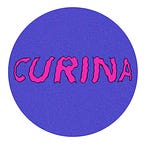This article was originally published on curina.co in March 2021.
Women’s History Month
Women’s History Month has not been around for too long– in fact, this month actually originated as a week-long celebration. In 1981 congress passed Pub. L. 97–28, which authorized and requested President Ronald Reagan to proclaim the week beginning March 7, 1982, as “Women’s History Week.”
Six years later, after being petitioned by the National Women’s History Project, Congress passed Pub. L. 100–9 which designated the month of March as “Women’s History Month.” Ever since, various presidents have issued a series of annual proclamations in which they highlight the contributions and achievements of women in the United States.
Although having a month dedicated to the accomplishments of women is a sign of progress, there is still a lot of work that needs to be done, especially in environments such as the art world. Places such as the National Museum of Women in the Arts (NMWA) seek to close the gender gap and provide a space where women can get the credit they deserve.
National Museum of Women in the Arts (NMWA)
Founded in 1981, the National Museum of Women in the Arts (NMWA) is the only major museum in the world solely dedicated to championing women in the arts. The foundation of the Museum as a private, non-profit institution, coincided with the establishment of “Women’s History Week.”
The Museum also opened exactly 10 years after the publication of Linda Nochlin’s essay “Why Have There Been No Great Women Artists?” which provided a new perspective on feminist art history and theory, and examined the institutional obstacles that prevent women from succeeding in the arts. The founders of the Museum, Wilhelmina Cole Holladay and Wallace F. Holladay asked themselves a similar question: “Where are all the women artists?” With that premise in mind, they began collecting women’s art at around the same time Nochlin’s article came out.
Today, the Museum is committed to recognizing the achievements of women artists of all periods and nationalities by exhibiting, preserving, acquiring, and researching their art. This commitment is reflected through initiatives such as “#5WomenArtists” which began in 2016 and has become an art world staple during Women’s History Month.
#5WomenArtists
In March 2016, the NMWA asked people through their social media “Can you name five women artists?” and added the hashtag #5WomenArtists. The social media campaign quickly went viral and has steadily increased in popularity over the past six years. This important campaign seeks to help increase awareness of gender inequality in art collections. Today, women remain dramatically underrepresented in museums, galleries, and auction houses, and #5WomenArtists brings attention to this issue in a relatable way.
For 2021, the NMWA decided to make the campaign a year-round initiative. By doing this the NMWA encourages art institutions around the world to focus on women artists every month of the year, and not only during March.
#5WomenArtists has been extremely successful in its mission. Since the conception of the campaign, the Museum’s social media platform has grown by 200%, creating tangible change for women in the arts. Today, there are more than 85,000 Tweets, 38,000 Instagram posts, and 220 media articles with the hashtag #5WomenArtists.
Some of the artists that the campaign has brought attention to include Alma Woodsey Thomas, Amy Sherald, Lalla Essaydi, Hung Liu, and Frida Kahlo– all women of color. Although some of these artists have international recognition, they have not achieved the same level of praise as their male counterparts.
Over the past six years, the campaign has shed light on important statistics that had previously been largely ignored, such as the fact that even though women make up nearly half of visual artists in the United States, they represent just 13 percent of artists in museum collections. In a way that reflects the general economy, the campaign has also highlighted that women artists earn 26% less on average than their male counterparts. Numbers are even worse for women of color, which is something that the campaign is also seeking to change.
Hopefully, the campaign will continue to grow and highlight up-and-coming women in the arts and not only established women artists, who have already entered major museums, private collections, or have blue-chip gallery representation. However, there is still a lot of work to be done. A 2019 article by Artnet, reported that over the past decade only 11% of museum acquisitions were works by women. More importantly, the addition of works has not been steadily increasing over time but rather, it peaked a decade ago! Additionally, the numbers are even worse for women of color and nonbinary and trans artists. Part of the problem is that we, as a society believe that we are doing better than we actually are. As the Artnet article notes, “The first step towards ‘addressing the problem is acknowledging where we actually are rather than where we perceive ourselves to be… then we can begin the real work of change.’”
Read more on the intersections of Feminism and art at curina.co.
